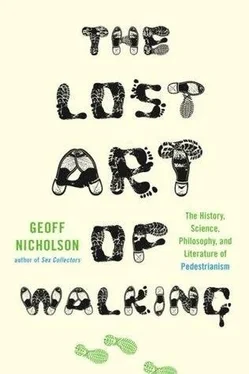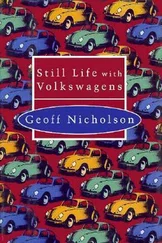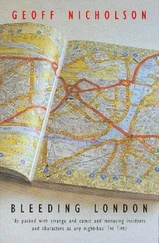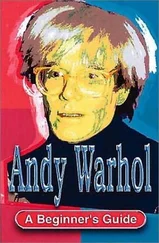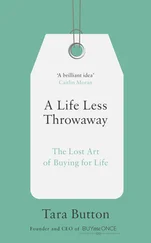Whether people who live in large cities actually need any reminding of the horrors of the urban environment is debatable, but MacColl’s song is better than many. It says that a single street, or avenue in this case, can connect high and low, rich and poor, the hopeful and the hopeless. The distance, physical and metaphoric, between the penthouse and the basement is ‘not that far’, with sharks in the penthouse and rats in the basement. It isn’t a subtle song.
I sang the song to myself as a sound track for 110 blocks or so of the avenue, from Madison Square Park, where it starts, up to where it becomes the on-ramp of the Madison Avenue Bridge. True, I was walking up rather than down, which was not precisely what the song describes, but it seemed more interesting to walk from an area I knew to one that I didn’t. By the time I got to the end, through Spanish Harlem, then East Harlem, I’d be in extremely unfamiliar territory.
The song is political in its way, and since Madison Avenue is the home of the New York advertising industry, political targets are comfortably at hand, but advertising isn’t mentioned in the song; perhaps that would have been too easy. I, for one, didn’t know there was any such thing as the Madison Avenue Advertising Walk of Fame. It runs along Madison from 42nd to 50th streets. There’s a plaque set right there in the sidewalk to prove it that reads, all in capitals — and the dots are theirs, not mine —:
IN RECOGNITION OF THE CONTRIBUTIONS OF ADVERTISING TO POP CULTURE AND ITS MOST ENDURING AND BELOVED ICONS AND SLOGANS…THE AMERICAN ASSOCIATION OF ADVERTISING AGENCIES DEDICATES THE MADISON AVENUE ADVERTISING WALK OF FAME AS A PERMANENT TRIBUTE TO THE MOST CREATIVE OF ALL INDUSTRIES…ADVERTISING.
Evidence of this creativity was available right there. Famous advertising icons and slogans, beloved no doubt, had been printed on banners that were hanging from the lampposts: the Aflac duck, Juan Valdez, ‘A mind is a terrible thing to waste’, ‘Sometimes you feel like a nut, sometimes you don’t’.
It was no surprise that the home of American advertising was pretty swank, but around about 60th Street things became even swanker, with shops selling designer clothes and high-end luxury goods, elegant restaurants, a store with a chrome ejector seat in the window, a chauffeur-driven pork-colored Rolls-Royce waiting at the curb. But it wasn’t so swank that a few blocks later it couldn’t accommodate a young black man standing on the corner saying repeatedly to passersby, ‘Help me out, please’, and then to himself, ‘Let it go’.
Then at about 100th Street things changed with a bang. There were medical buildings, some project tower blocks, more people walking, street traders, crowds on the sidewalk, and it became a good deal less white. In a schoolyard at 104th Street a lone white teenager was sitting on a wall by the chain-link fence trying not to look nervous, and failing. He wasn’t within a hundred yards of any other kid in the schoolyard, none of whom shared his skin color. If this were a movie you knew he’d integrate and ingratiate himself in some novel manner — as it was it looked like he was just sitting there praying for his school days to be over.
At 117th Street a group of forlorn but surprisingly good-natured people was blocking the sidewalk, including one man on crutches, one woman in a wheelchair, and a black kid who was saying loudly to nobody in particular and certainly not to me, ‘Gimme a bottle of Cleeko, eighty dollars, I’m ready to go’. I don’t think he seriously thought anybody was going to give him anything.
When I got to 120th Street and Marcus Garvey Park, still called Mount Morris Park on the map I had with me, I was reminded of another song, Joe Souths ‘Walk a Mile in My Shoes’. The fact is, walking a single mile in anybody’s shoes really isn’t very hard. You could walk that distance in shoes that really didn’t fit you at all. Walking a mile, even several miles, in the boots I was wearing that day was fine. They were pain-free and really quite comfortable for about four and a half miles, but then they started to feel really uncomfortable, and after about five miles they became absolutely excruciating.
Suddenly I felt a terrible twinge and wrench in my right pinkie toe, as though all the skin had been abruptly ripped from the toe in one sharp slice. I limped into the park, found a bench, took off my boot and sock, and saw that, yes, all the skin had indeed been abruptly ripped from the toe in one sharp slice. It hurt and it didn’t look pretty.
I thought about ending my walk, and hobbling to the 125th Street subway station. I’d already walked over a hundred blocks; there’d be no great shame in retiring injured. But I looked around the park at all the people who were sitting there killing time. Most looked as though they had a lot of troubles, and although I didn’t presume to guess what those troubles were, I thought they were probably a whole lot worse than a toe with the skin stripped off. I sat for a while but then I put my boot back on and decided that — like Felix in a different song — I would keep on walking.
♦
Given people’s capacity to write songs about anything at all, it’s hardly surprising that there are any number of songs about walking. The earliest form I know is the chanson d’aventure, devised by the Provencal troubadours in the twelfth century. Traditionally these songs often begin with the line ‘As I walked out one morning’, and they go on to describe a troubling or surprising meeting or some unusual sight encountered while out walking. Compare and contrast with Bob Dylan when he goes out ‘to smell the air around Tom Paine’ in the song ‘Tom Paine’ on John Wesley Harding .
There’s evidently something contradictory here. The moment you use those opening words, the listener knows something surprising is about to happen, which means that it’s not really so surprising after all, which is an issue at the very heart of the idea of ‘going for a walk’. We may not want our walks to be ‘adventures’ in the most extreme sense — we can do without pirates, gunplay, caverns measureless to man — but we do hope to see something new on our walks, even in the most familiar surroundings.
‘Walking out’ in the troubadours’ sense sounds like an everyday activity, something close to home, not necessarily part of some great thousand-mile journey, and the implication is that adventures and wonders are to be found wherever we are, if not in our own backyard, then within walking distance of it.
The trope ‘as I walked out one morning’ is thrillingly close to the traditional blues opening line ‘I woke up this morning’. And if you’re trying to write a simple blues lyric it’s very tempting to rhyme blues with shoes, and before you know it, you’re writing a song about walking.
Robert Johnson didn’t resist the temptation and wrote ‘Walkin’ Blues’. Johnson’s words aren’t easy to understand at the best of times, and attempts to nail them down in lyric sheets and songbooks don’t make things much clearer. In a book of sheet music called Robert Johnson at the Crossroads: The Authoritative Guitar Transcriptions , the words are presented thus:
I woke-up this morning — feelin’ ‘round for my shoes
Know ‘bout ‘at I got these old walkin’ blues.
Which isn’t exactly what I hear when I listen to the song, and is any case inscrutable, but it seems he has the walking blues because his ‘little Bernice’ has gone. She’s walked out on him, and rather than stay at home moping, he’s hitting the road again on foot. Alternate interpretations are no doubt possible. A whole bunch of fellow blues walkers, including Bonnie Raitt, Eric Clapton, and the Grateful Dead, have followed in Johnson’s footsteps and done cover versions.
Читать дальше
